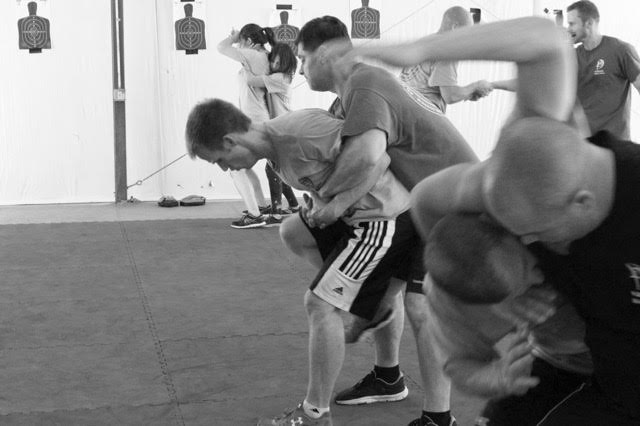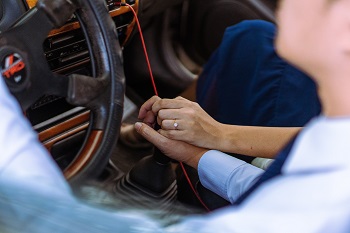How Do You Know When You’ve Mastered A Technique?
Over the years, lots of students have asked me this question? I’m sure lots of other instructors have been asked the same thing. So, how do you know when you’ve mastered a technique?
Know The Formula
Once you learn the following, it’s actually pretty easy to know whether you can move on to something else or if you still have work to do.
The formula is UI + CI+ CC + UC = mastery.
U stands for Unconscious
I stands for Incompetence
C stands for either Conscious or Competence.

Unconscious Incompetence
One easy way to explain this is by looking at kids learning something. Maybe you have kids going through this, or maybe you can remember when you were one. Let’s go with tying shoelaces. When a child is super young, they don’t even know what shoelaces are. If you gave them a pair, they’d either choke themselves to death or eat them. Mom and dad have to do any tying of the laces. This phase is UI or UNCONSCIOUS & INCOMPETENT. FYI: Unconscious in this sense means Unaware, not that you’ve knocked your kid out with a dropkick to the melon. In other words, they are unaware of laces and what they do, and they couldn’t tie them in if you gave them a pair. Unconscious and Incompetent.
Conscious Incompetence
Now the child in question is a little older. I don’t have any that I’m aware of, but I’d imagine this would be around age 2-4. At this point, they’ve figured out what laces are. They’ve watched you tie them every time you’ve dressed them up. So they’re now aware (CONSCIOUS), but because they still can’t tie them, they remain INCOMPETENT. That’s what gives us CI. Conscious but Incompetent.
Conscious Competence
Now we get to CONSCIOUS (Aware) and COMPETENT. Our child is older. I’m guessing 5 to 8 years of age. Now they can tie their own laces competently but not without thinking about the process. This is where we see the tongue sticking out and total focus. Another indication of this level is the act can’t be performed with any distractions.
Unconscious Competence
The 4th part of the formula, UC, is UNCONSCIOUS COMPETENCE. In other words, they can competently tie their laces, but now it can be done on auto-pilot. They could be talking to you, watching a text come in, and listening to the radio, all at the same time.
Many Applications
We can use this for many examples. Another great one is an adult learning to drive a stick shift, aka “Millenial Anti-Theft Device.” As a child in the back of the car, the kid is Unaware of gear shifting and clutches. Unconscious Incompetence. Older, he now sits in the front seat and watches while Dad shifts the gears while driving. Conscious Incompetence. Next, it’s time to learn to drive. There you are in the back of the Supermarket parking lot on a Sunday with the old man, and you’re kangarooing his car across the lot, wrecking his gearbox in the process. It’s Conscious Competence and, just like with the laces, the kid can’t do it with a radio on, anyone talking, or, heaven forbid, any traffic around.
Now, cut to the same person six months later. They’re driving down the road, chatting to their friend next to them, drinking a soda, tuning the radio, flipping the guy off next to them, and changing gears all at the same time. Mastery again. Unconscious Competence.
It Can Happen Fast
In my Krav Maga school, I’ve seen people get through the first 3 levels of the formula in as little as ten minutes. This is a huge difference compared to our other example, which can take years in the case of the laces and months in the case of driving a manual gearbox.

Think of escaping a headlock, for example. They come into the class not knowing how to get out of the headlock at all. UI.
I demo the move. Immediately they’re now aware but still can’t do it themselves, so they’re at CI.
Now they start to practice the move. A few reps in, and they’ve already arrived at Conscious Competence.
Getting to Unconscious Competence is going to take a bit longer.
10,000 Hour Bullshit
A lot of people leapt all over the “10,000 hours to mastery” bs. But, as usual, they misconstrued the information, no doubt because their attention spans are shorter than a goldfish’s, and they’d rather listen to the soundbite than read the book. The 10,000-hour nonsense was talking about reaching world-class status. It didn’t take you 10,000 hrs (assumed to be about 5 years of serious practice) to drive a stick shift without conscious thought. How many hours did you get kicked in the balls before you unconsciously jerked back when someone tried to kick them? I’m willing to bet it didn’t take you five years.
300 To 500 Reps
What I’ve found is that it takes 300 to 500 correct repetitions to get it to the point where it can be done on auto-pilot. This is why it’s so goddam important for students to go slow and learn the technique the right way the first time. Never forget that “slow and correct” will one day become “fast and correct.” “Fast and wrong” will never become “fast and right.”

When you’re learning something new, you’re creating a neural pathway. Think of walking through the woods where nobody’s been before. Do it once, it’s hard to see where you’ve been. But, go back and forth along the same path many times, and now we can see where you’ve been. Stop walking for a few weeks, and it disappears again, just the same way you forget the move if you stop practicing.
Keep doing it, however, and eventually, the single track will be deeper and wider. It’s no longer a footpath. There are ATVs and Jeeps on it. Then they put down gravel. Then they pave it. Next thing you know, it’s a highway. The neural pathway is exactly the same. As it gets run over again and again, the path becomes more pronounced and easier to travel along.
Uh Oh
If we allow the student to get excited and go too fast, he runs in the wrong direction in the example above. He’s going to have to unlearn the wrong move before he gets the right move. That will take 3,000 to 5,000 repetitions. Why? Because he’s going to have to carve a deeper path than the wrong one, so his brain knows which way to go automatically. Faced with two paths of equal size, you won’t know which one to go down. When the old one is overgrown again, and the new one is deeply forged, the choice is automatic.
So now you and the student have the answer. When he can do it without concentrating or sticking his tongue out, and in the middle of a pile of stress and distractions, he’s good to go.
